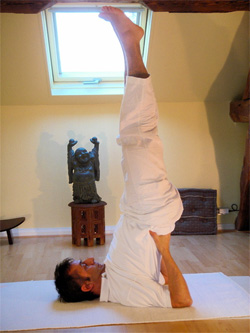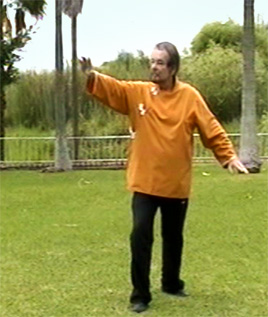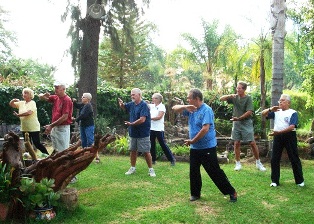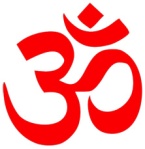While both Tai Chi and Yoga offer many of the same benefits, they are practiced in very different ways. We compare the basic similarities and differences of these two extremely popular body-mind approaches in the paragraphs below.
 The Basics of Yoga
The Basics of Yoga
Yoga “asanas” are normally performed on a floor mat, seated or reclining, with some standing postures. Every Yoga position is held for a certain period of time, which gives the muscles a chance to relax into the stretch.
Each position is independent from the others and need not be done in any particular order. Some Yoga poses can be harmful if the practitioner or leader does not know what they are doing, but they can also be amazingly helpful and even curative, when employed correctly.
The Basics of Tai Chi
 On the other hand, Tai Chi is practiced by performing the various prearranged movements of a “form.” The Tai Chi form is repeated the same way each time. Some of these forms take 10-15 minutes to complete, some between 15-30 minutes.
On the other hand, Tai Chi is practiced by performing the various prearranged movements of a “form.” The Tai Chi form is repeated the same way each time. Some of these forms take 10-15 minutes to complete, some between 15-30 minutes.
The movements are intended to be done in a graceful, slow manner that flows in a seamless transition from position to position. Because Tai Chi never locks out joints such as knees and elbows, and because it is performed slowly, without holding any position, it is very rare that a practitioner is hurt while doing it.
The Importance of Intent
When today’s Yoga and Tai Chi practitioners perform their art, they will have roughly the same goals in mind. This was not the case even a century ago, when Tai Chi was still taught as a martial art. Yoga contains no martial techniques and Tai Chi is full of them.
Nevertheless, modern students of both arts are generally trying to accomplish the same things:
 Warm and stretch the muscles to keep them supple and functioning well.
Warm and stretch the muscles to keep them supple and functioning well.- Twisting exercises designed to liberate the spine and all of the body’s joints.
- Breath control to enhance the effects of the practice.
- Energy work that helps improve circulation, heart and lung health, mental acuity and longevity.
- Stress reduction and overall enhancement of well-being and health.
There are almost as many different approaches to both Yoga and Tai Chi as there are individuals who practice them. The two are anything but mutually exclusive, however, and can be incorporated quite synergistically as part of an individual’s regular exercise regimen.
Meditation, Tai Chi & Yoga
While Tai Chi is intrinsically a martial art and may actually be used for self-defense, it is often referred to as “meditation in  motion, “moving Yoga,” or “Yoga in motion.” There are styles of Yoga and Tai Chi that emphasize the aspect of meditation, and most teachers of both arts will at least touch on it from time to time. Relaxation is a critical aspect of both practices, and meditation is a natural next step, whether it is labeled self-hypnosis, stress relief, deep relaxation, or spiritual seeking. Indeed, most “seekers” would agree that anyone who is able to truly calm the mind is actually connecting with the ineffable One in some form of meditation, however loosely defined.
motion, “moving Yoga,” or “Yoga in motion.” There are styles of Yoga and Tai Chi that emphasize the aspect of meditation, and most teachers of both arts will at least touch on it from time to time. Relaxation is a critical aspect of both practices, and meditation is a natural next step, whether it is labeled self-hypnosis, stress relief, deep relaxation, or spiritual seeking. Indeed, most “seekers” would agree that anyone who is able to truly calm the mind is actually connecting with the ineffable One in some form of meditation, however loosely defined.




